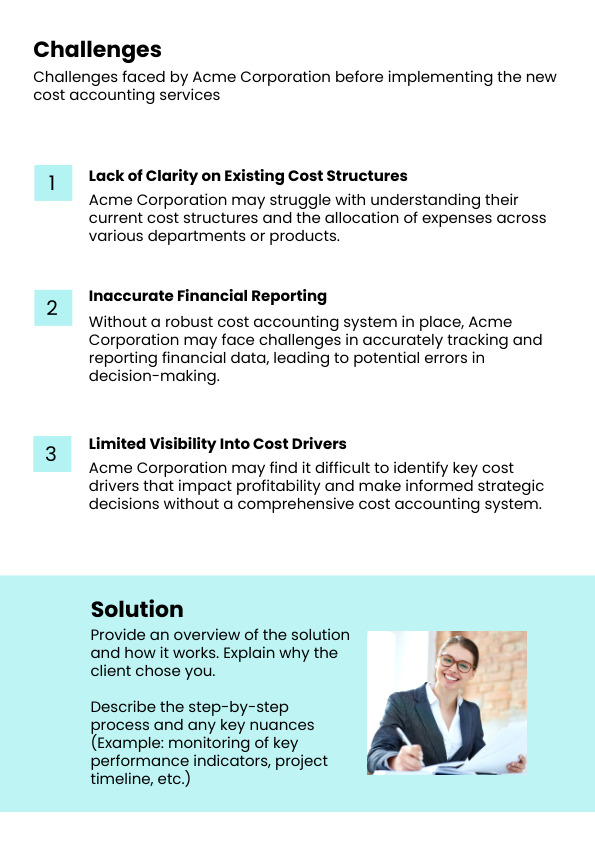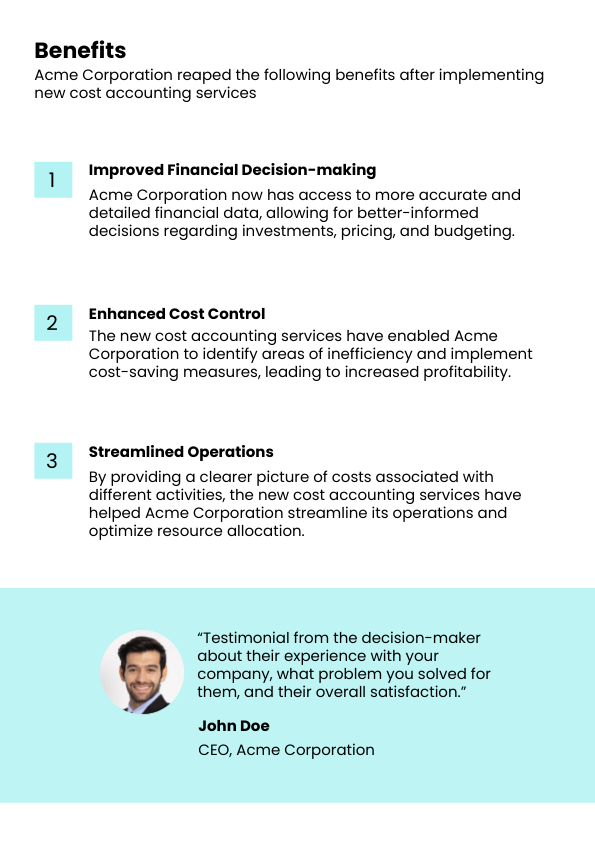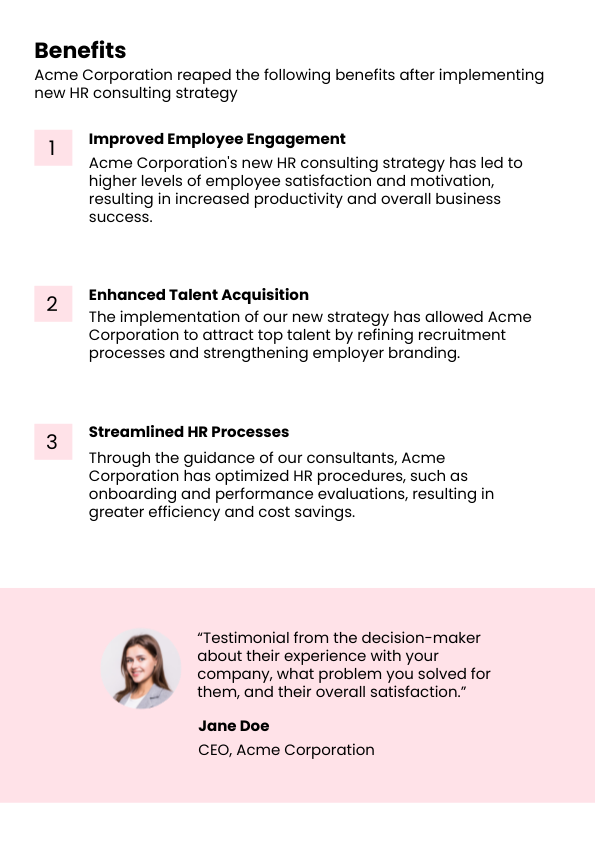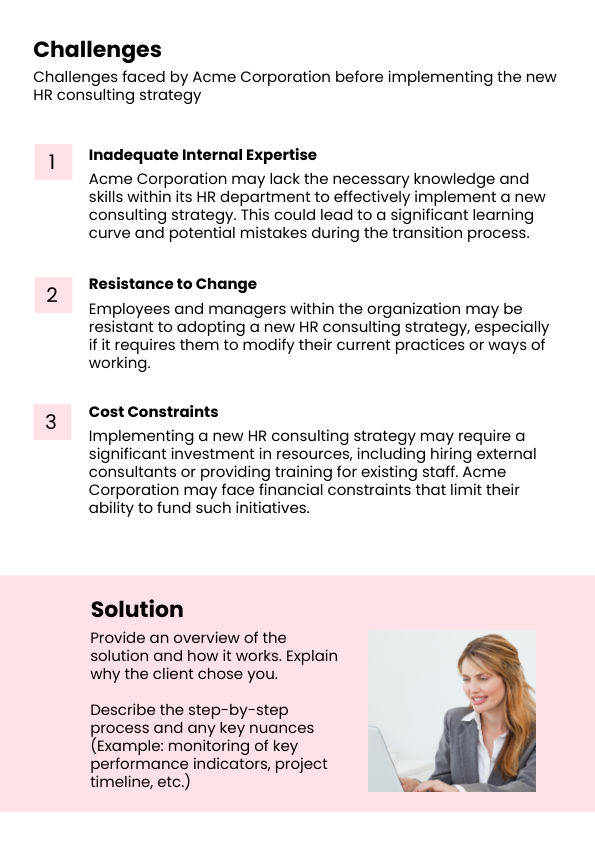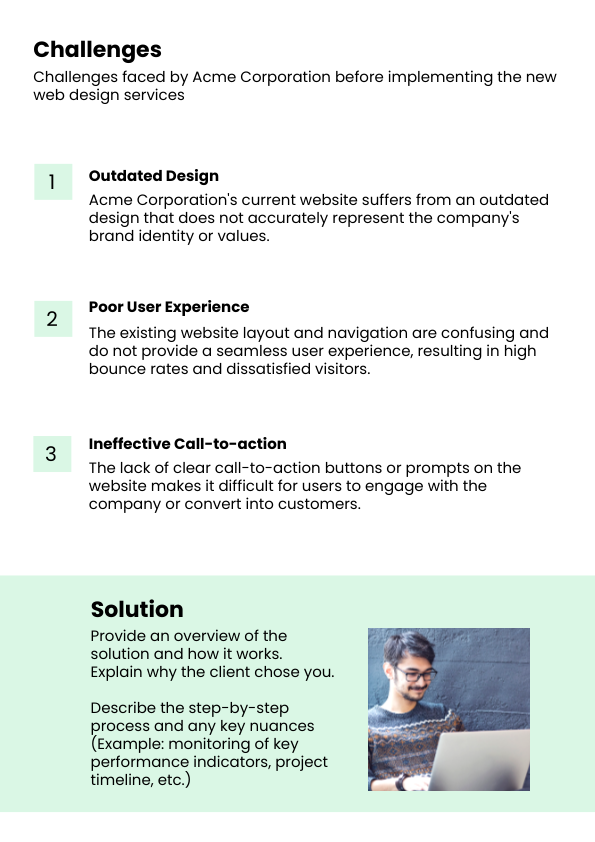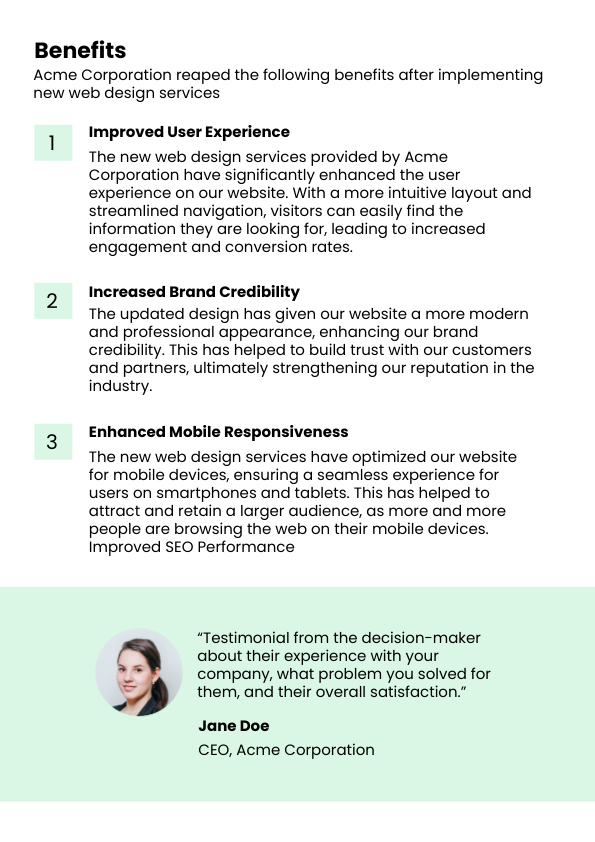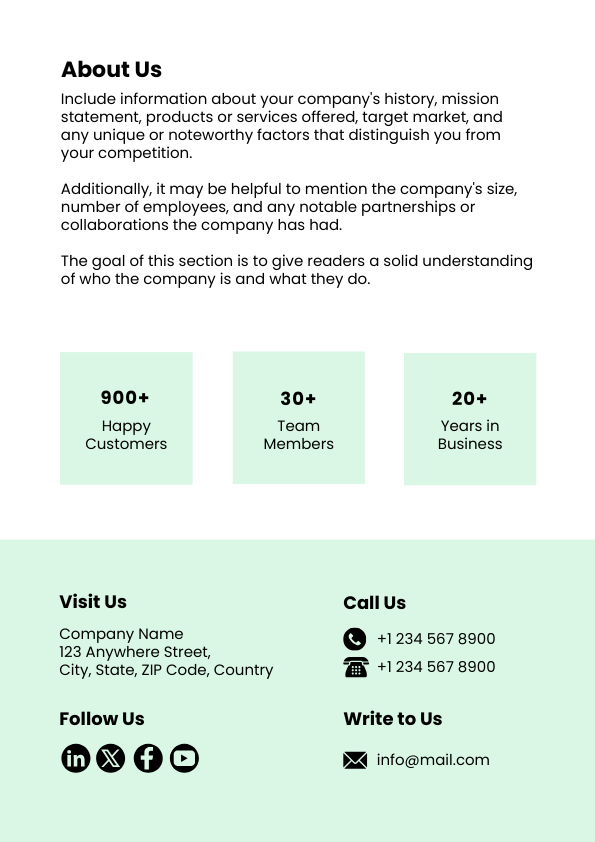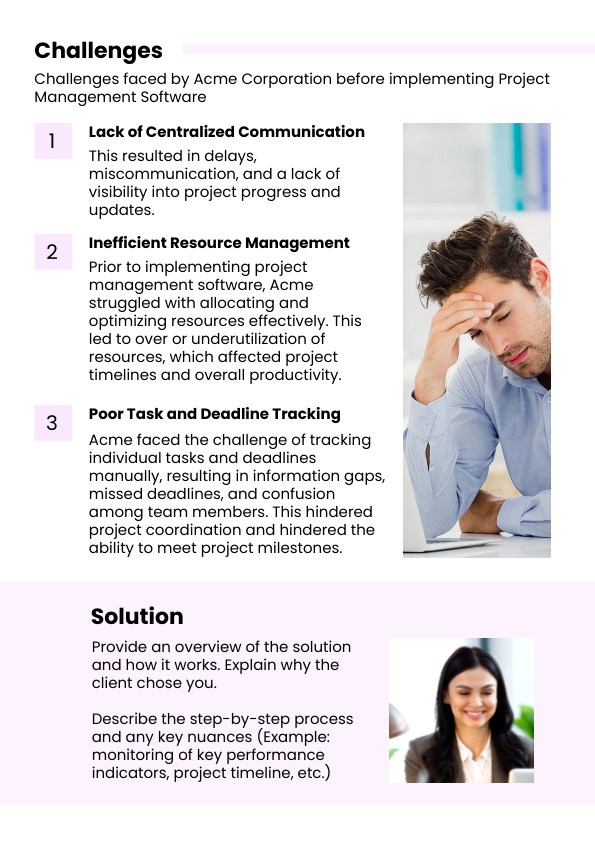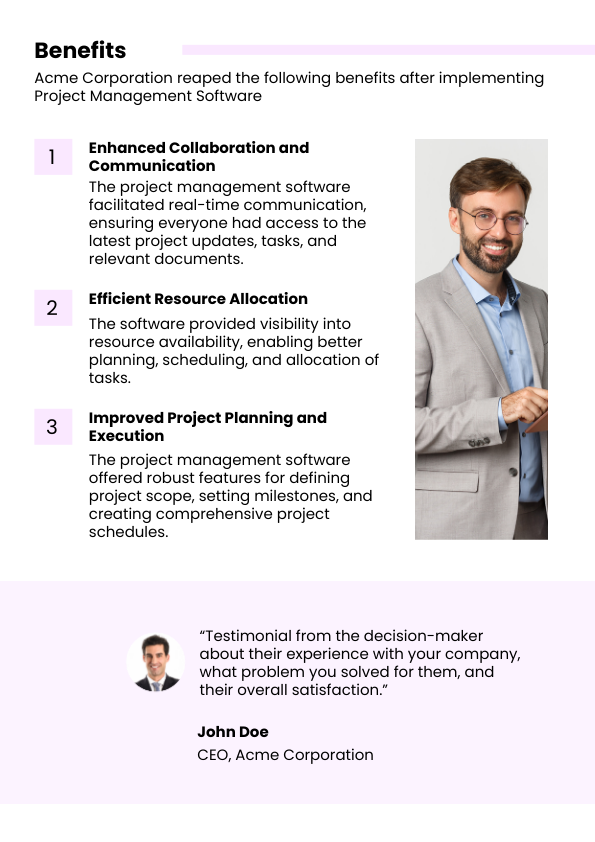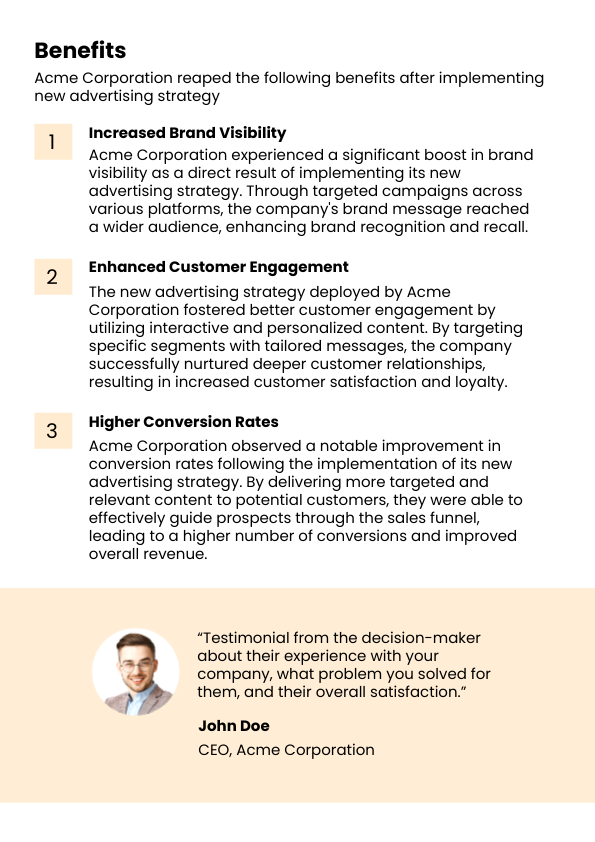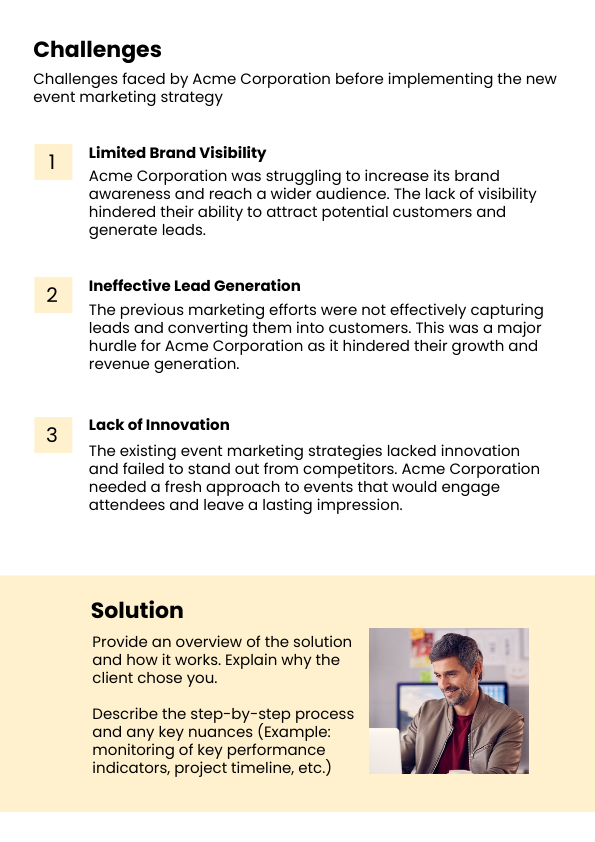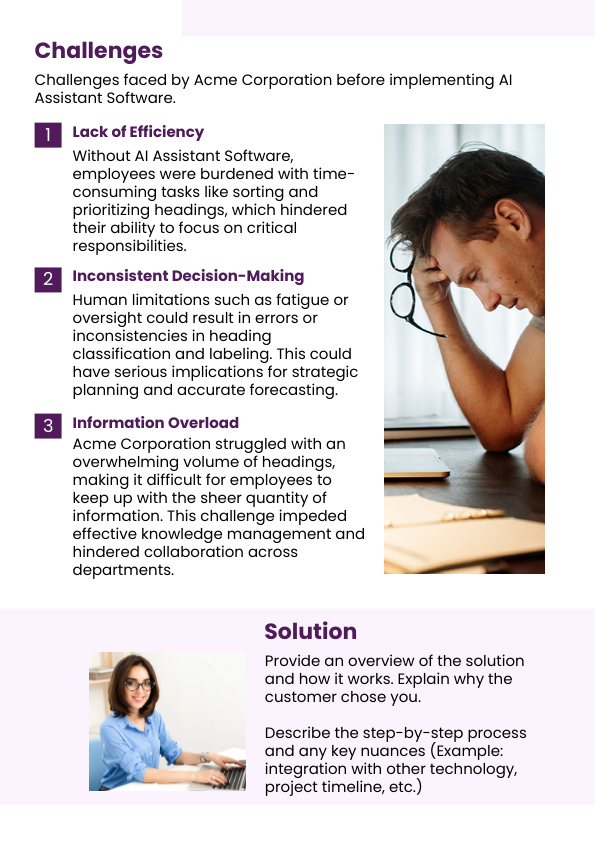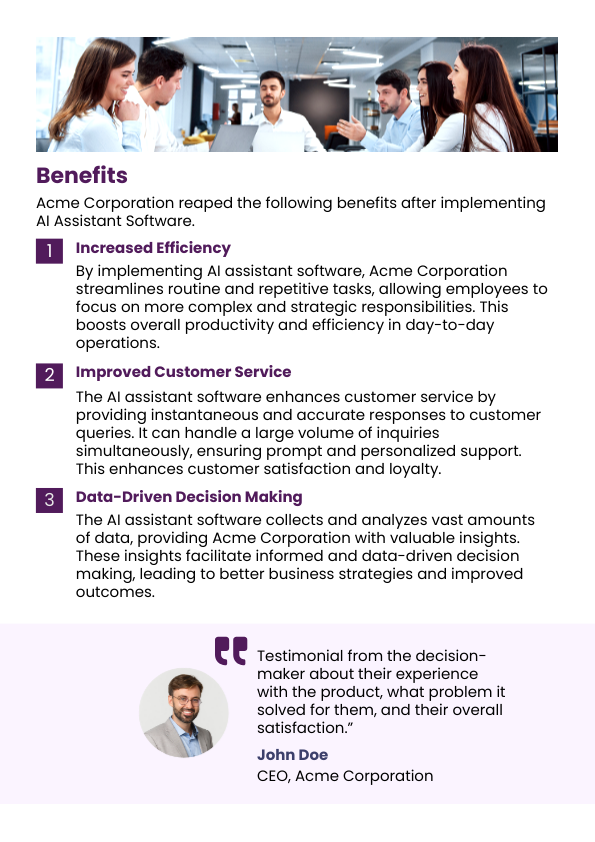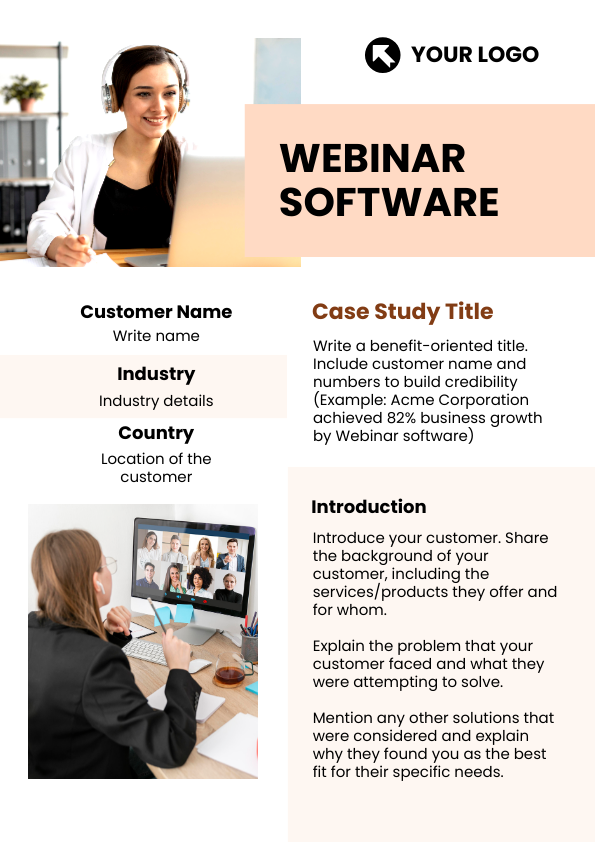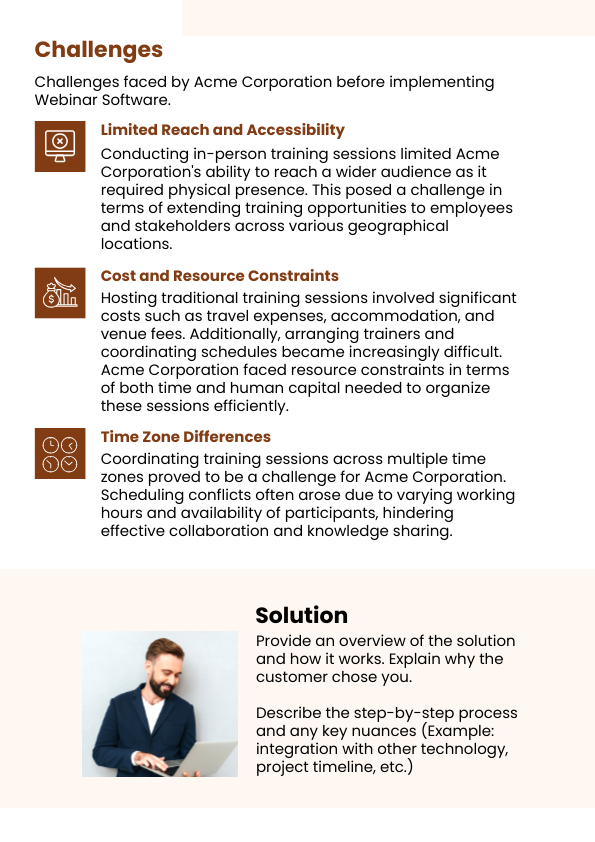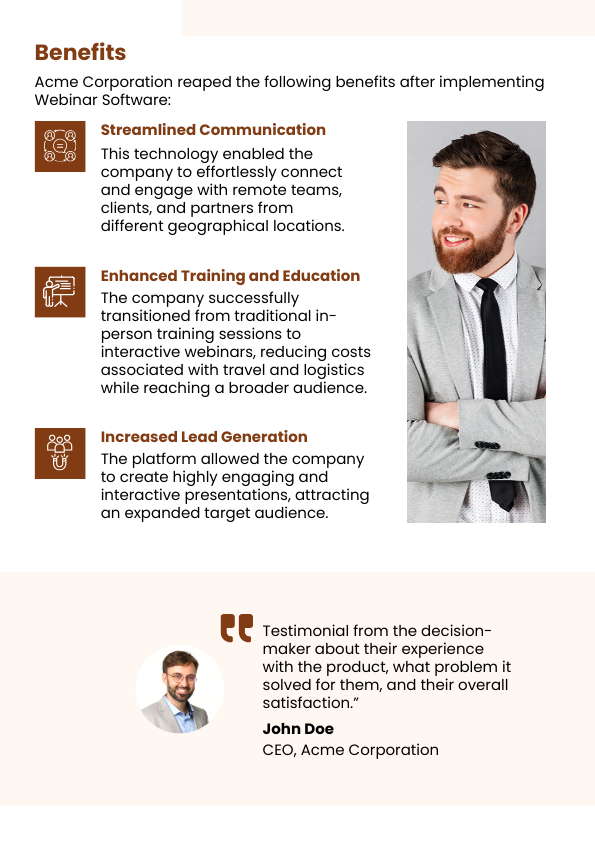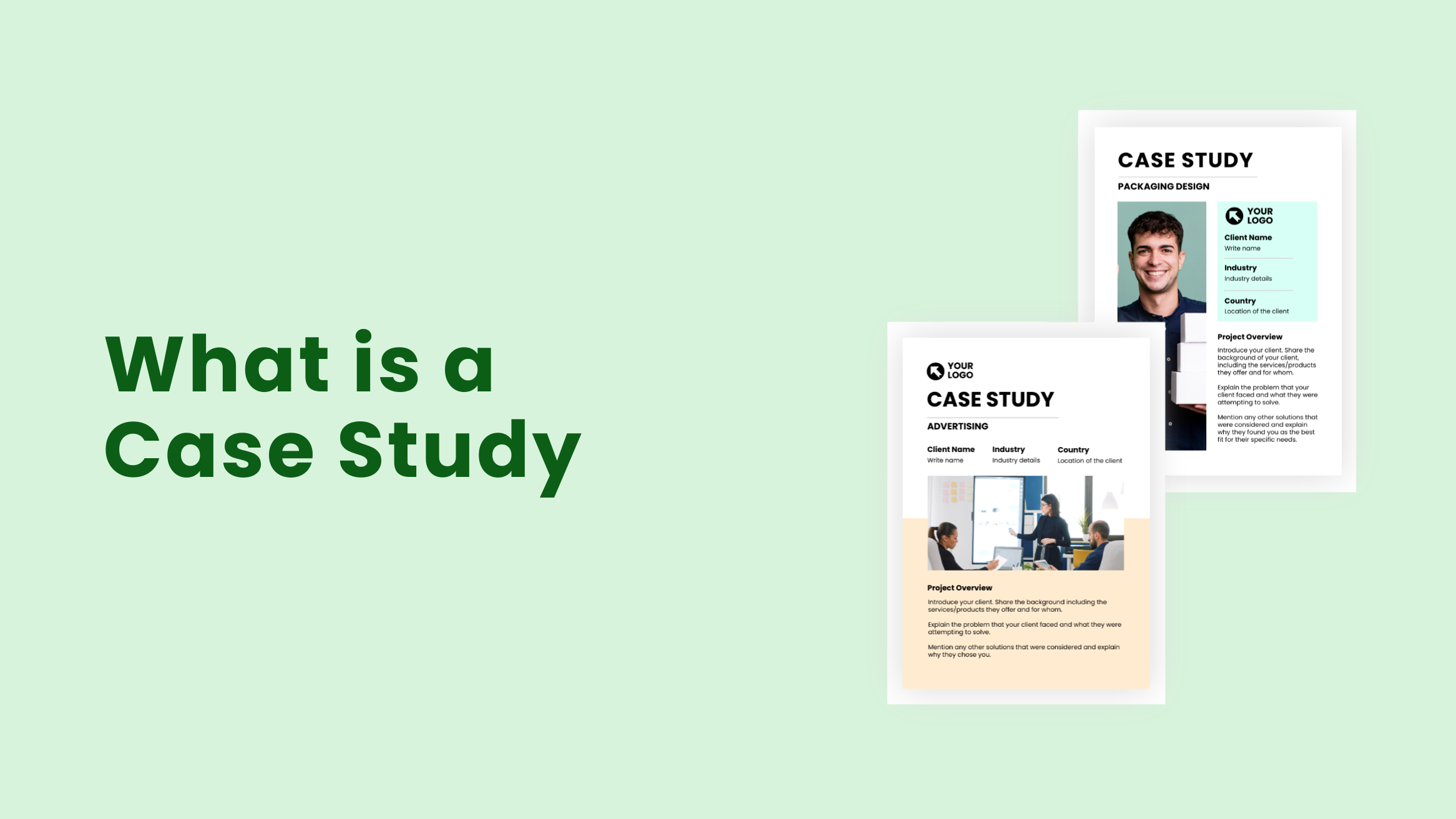
What is a Case Study: A Complete Guide of Case Study Basics

What is a case study? A case study is an in-depth analysis of a real-life situation or project in business. Case studies are not just theoretical exercises; they are practical tools that can empower marketers and entrepreneurs. They showcase successes, offer insights into practical strategies, and help attract and convert potential clients.
What is a Case Study
- Definition: In-depth analysis of a real-life business situation or project, providing insights and showcasing successes.
- Purpose of a Case Study: Demonstrate effective strategies and attract potential clients by highlighting real-world applications and results.
- Components: Background, executive summary, challenges, solutions, conclusion, and call-to-action.
Let’s delve into the transformative potential of case studies in different business contexts. With the right case study templates, we can decode the perplexing concept of case studies and understand their importance, from their definition to their advantages. This understanding can inspire new strategies and approaches in your business.
Table of Contents
- What is a Case Study
- Specific Case Studies for Different Industries
- Why are Case Studies Important
- Benefits and Limitations of Case Studies
- Case Study vs Use Case
- Case Study vs. White Paper
- Case Study vs Survey
- Case Study vs. Research Study
- Case Study vs Report
- What Does a Case Study Look Like
- What is a Case Study Method
- Is Case Study Qualitative or Quantitative
- Types of Case Studies
- FAQs
What is a Case Study
Let’s explore how to define a case study and what it means for business success.
A case study is more than just a report; it’s a window into real-world business challenges and triumphs. As per the case study definition, it’s like a roadmap, guiding marketing associates, small business owners, and company leaders through identifying challenges and showing strategic solutions for success.
Through information gathering, client interviews, and deep analysis, case studies shed light on the past hurdles and the strategies that conquered them. These are not just for showcasing achievements; these are invaluable tools for training new team members and impressing potential clients. But to make them truly impactful, they need structure and finesse.
Here’s a staggering fact that underscores the importance of case studies. About 29% of prospects rely on case studies to make informed purchasing decisions. This highlights the significant role case studies play in shaping business outcomes.
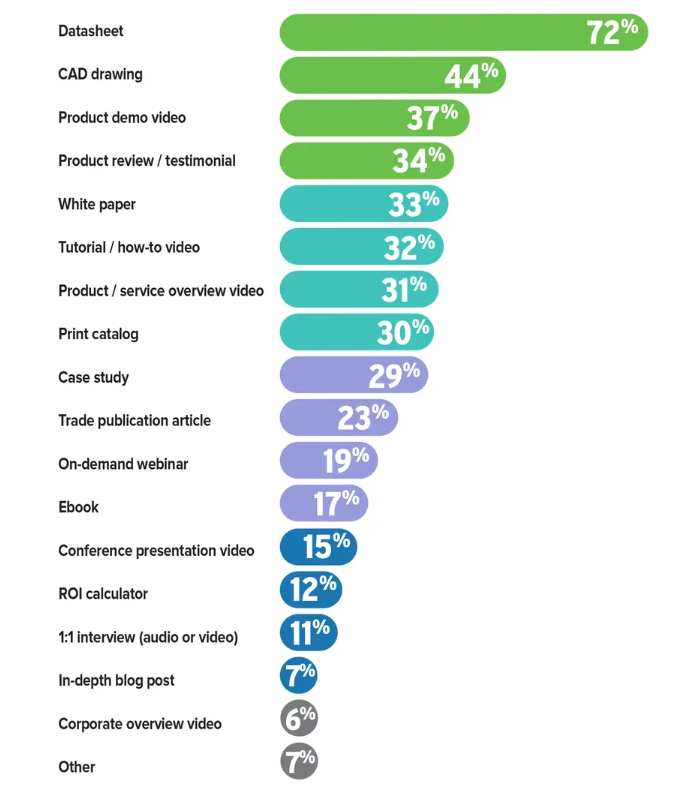
Specific Case Studies for Different Industries
We understand your business goals and solutions are particular, and you need a case study design that suits your purpose. Let’s explore different case studies and how to align them with your business.
What is a Case Study in Accounting
A brilliant case study in accounting illuminates the practical application of accounting principles in a real-world scenario. It should be informative and engaging, demonstrating the impact of sound accounting practices.
If you need to create an accounting case study, always focus on clean, clutter-free design formats that leave enough room to discuss real-life scenarios, like the following case study template.

Get This Template and More
Curious about what to include in a case study for accounting firms?
As shown in the example of the case study in accounting, there are relatable accounting issues, such as improving profitability, optimizing cash flow, or navigating a new tax regulation. Stay ahead by showcasing the specific accounting methods or strategies to address the client’s challenge. You can demonstrate your expertise by highlighting implemented accounting principles to achieve a positive outcome in your case study.
What are Management Consulting Case Studies
A consulting case study puts you in the shoes of a consultant tasked with analyzing the situation and recommending solutions. It’s a chance to showcase your problem-solving skills and strategic thinking under pressure.
Here’s a consulting case study example template.

Get This Template and More
Use a structured approach to describe the issue, showcasing your adeptness in critical thinking and solution prioritization in the case study for consulting. Additionally, utilize case study templates of various consulting disciplines such as management, strategy, and leadership consulting. These templates display your proficiency in breaking down the problem systematically, addressing a tangible challenge encountered by a particular company or industry.
Here’s an example of an HR consulting case study that’s easily customizable.
What is a Design Case Study
Think of a design case study as a visual narrative. It tells the story of a design project, from the initial challenge to the final, successful solution. Moreover, it showcases your design process, decision-making, and work’s impact on the client’s goals.
Therefore, your design case study should align with the services you can offer for your client’s problem. DocHipo provides case studies on UI design, motion design, illustration design, brand identity and advertising design, and many other design-related templates.
Check out the web design case study template that starts with a clear and relatable design problem.
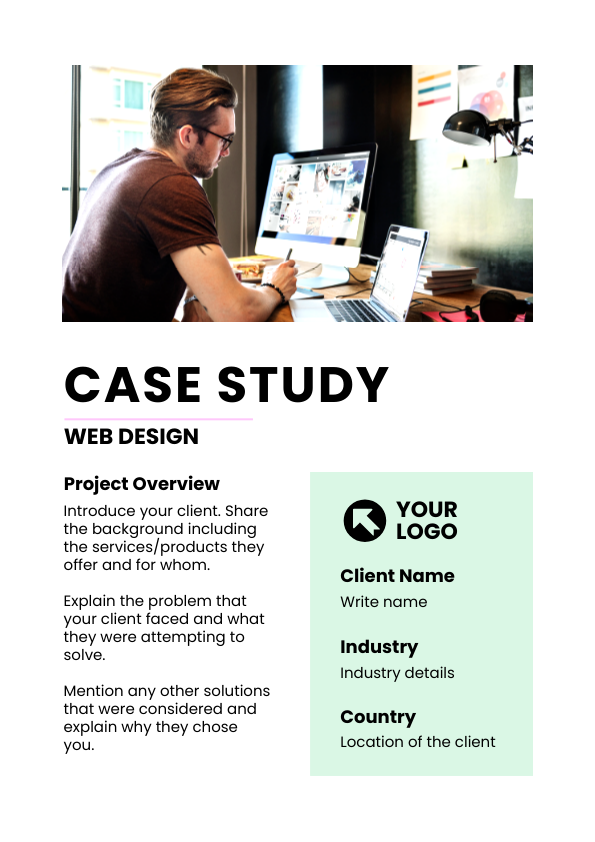
Get This Template and More
After showcasing relevant user research data and insights to demonstrate a data-driven solution, you must add a strong call to action and brief information about your company to convert your leads into customers.
What is a Case Study for IT Company
Case studies for IT companies are success stories that showcase expertise in solving B2B real-world problems through technology. They are a way to demonstrate your capabilities, build trust with potential clients, and position yourself as a trusted advisor.
But what makes a great IT case study?
Use relevant data and metrics to depict the client’s initial situation. This could include IT costs, system downtime, or user productivity levels. You can create case studies for mobile app development, web development, and cyber security services to set your company apart in IT and management solutions.
Let’s explore the example of a case study for project management tailored to the needs of project managers and marketing executives.

Get This Template and More
This customizable template allows you to display the IT solutions you implemented and explain how you addressed the client’s needs.
What is a Case Study in Marketing
Curious about marketing case studies? These powerful tools reveal how your offerings drive success for clients. Whether external client victories or internal wins, a marketing case study paints a vivid picture of achievement.
From company backstory to concrete results, it covers all bases: background, challenges, solutions, actions, and outcomes. Plus, it’s not just about words—incorporating visuals and client testimonials boosts credibility.
Check out the marketing case study example templates that pave the path to success in your business endeavors.
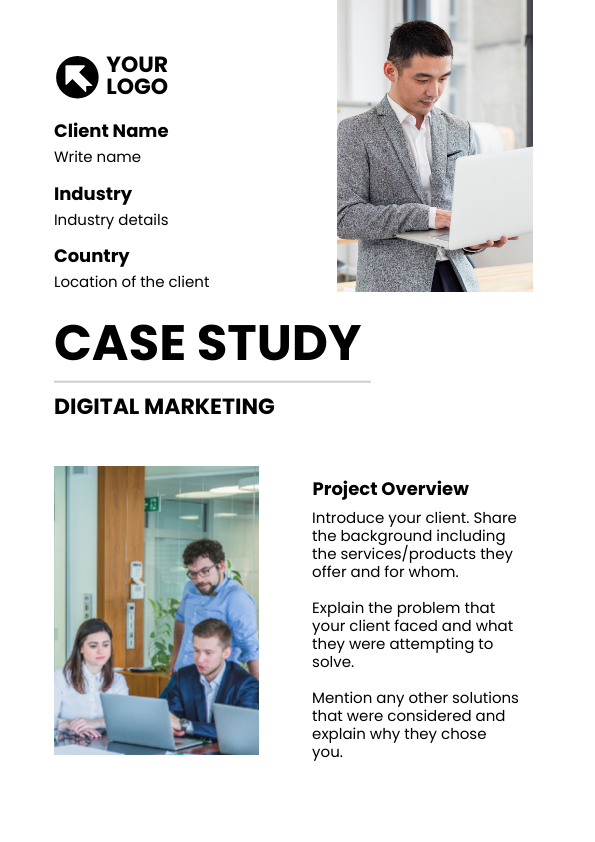
Get This Template and More
This marketing case study template immediately grabs your attention with its clean and modern design, ensuring every detail is easy to follow and understand.
Writing a compelling marketing case study starts with the customer. The above advertising case study template tells the story of a real client facing a relatable challenge. As we said before, a marketing case study is your sweet spot for engaging your leads who want to overcome the same challenging situations. Let it lead the way for your inventive solutions, ensuring credibility and a top spot in the B2B market.
Turn heads and win hearts with DocHipo’s marketing case study templates. From digital marketing to mobile marketing, search engine optimization, email marketing, and beyond, these templates help you tell your success stories in a way that connects with real people.
What are Case Studies in Sofware
Imagine a compelling story that brings your software to life. A software case study delves into a real-world scenario where your software tackled a specific challenge for a client. It demonstrates your software’s problem-solving capabilities and the positive outcomes it delivered.
DocHipo software case studies are useful for niche-based services, from HR to AI assistant software.
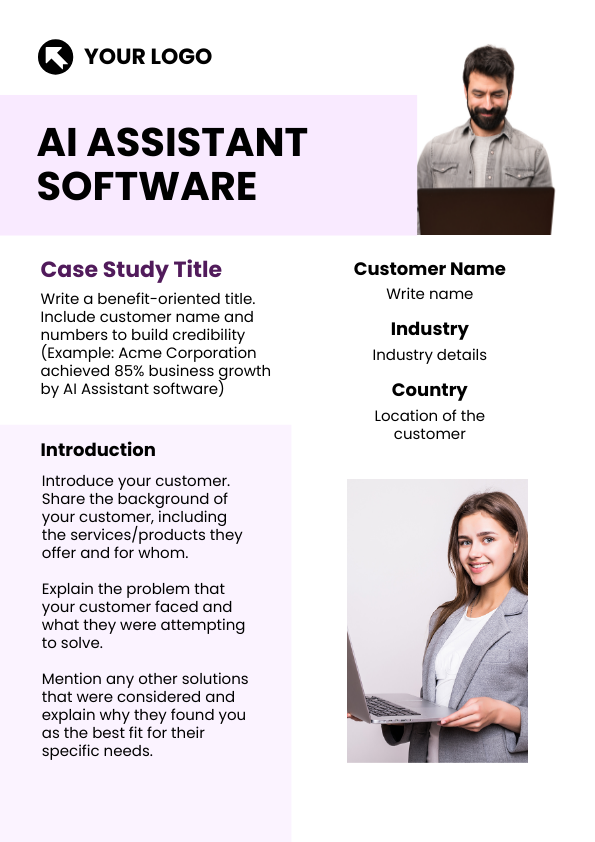
Get This Template and More
Introduce the client’s struggles and showcase how your software provided the solution. Demonstrate the positive impact your software had on the client’s business goals. This could be increased efficiency, cost savings, or improved user engagement.
What are Case Studies in Business
A business case study is like a detailed story about a company. It shows how they solved a problem, succeeded, or faced challenges. Companies use these stories to share how well their ideas and strategies worked.
Here is a business case study example from Trello.
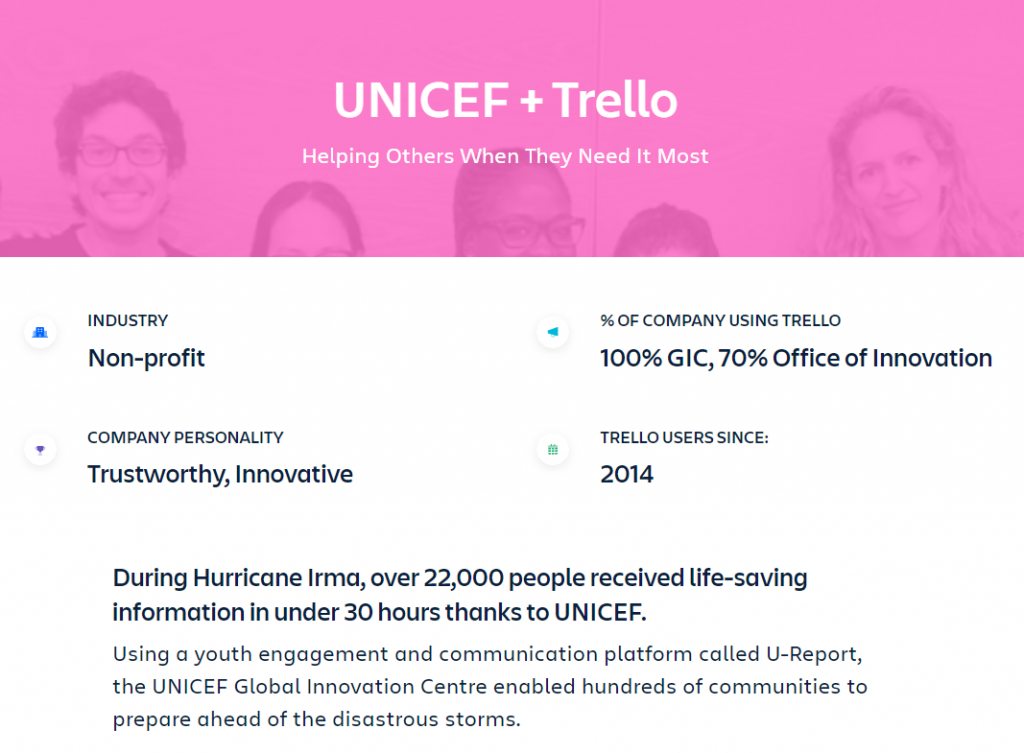
Why are Case Studies Important
What is the purpose of a case study? Case studies thoroughly evaluate specific situations. They reveal which strategies worked, which didn’t, and what could be improved. This insight is invaluable for future planning.
Furthermore, case studies help identify potential solutions to problems. Examining similar past situations allows you to discover effective strategies and avoid common pitfalls.
Finally, use case studies to target your audience and showcase your expertise. Publishing successful case studies demonstrates your ability to solve problems, boost your credibility, and attract more business. Essentially, case studies serve as the original form of social proof, highlighting your problem-solving skills and success stories.
Benefits and Limitations of Case Studies
Before creating this SEO-centric lead magnet, you should consider the advantages and disadvantages of case studies.
| Benefits of Case Studies | Limitations of Case Studies |
| Collects large amounts of information | Responses from interviews are subjective |
| Discovers new insights into a subject | It can be time-consuming and expensive in specific industries |
| Builds brand trust and loyalty | There’s a risk of generalizing results |
Case Study vs Use Case
We’ve listed the difference between a use case and a case study.
| Case Studies | Use Cases |
| Focuses on a single customer’s experience with your product | Focuses on a specific type of customer or industry |
| Includes a detailed description of challenges, solutions, and benefits | Includes a broad description of how a solution solves challenges |
| The purpose is to show real-life applications and quantify the results | The purpose is to help prospects envision how the product meets their needs |
| Content is specific and detailed | Content is flexible and broad |
| Provides high social proof by showcasing actual customer experiences | Provides lower social proof, focuses on potential scenarios |
| Ideal formats are feature story, Q&A, video | Ideal formats are white paper, one-pager, graphic, video |
| Advantages include detailed insights and quantified benefits | Advantages include flexibility and demonstration of process and value |
| Examples include percent of cost savings, time savings, new revenue | Examples include different problems solved and benefits for various buyer types |
| Engages through storytelling and specific results | Engages by allowing prospects to imagine usage |
Case Study vs. White Paper
Often, marketers get misled by the similarities between a case study and a white paper. Though both are time-consuming and heavily research-oriented, everything about the two types of content is distinguishable, from the content format to the goals.
| Case Study | White Paper |
| Demonstrates how a product/service helped a customer | It helps understand an issue, solve a problem, or make a decision |
| It’s shorter in length, around 800 words | It’s longer in length, approximately 2,000 words or six pages |
| It consists of extended testimonials, specific results | Technical information, images, diagrams, research, and proof points |
| Best for the top or middle of the funnel | Targets all stages of the funnel |
| It is 90% educational, 10% promotional | It is an in-depth technical content |
| It has a benefits-oriented headline, challenge-solution format, up to 1,000 words | It has a table of contents if it is over 3,000 words, bold title, abstract, findings, citations |
| Created for website, blog, social media, trade shows, sales enablement | Created for website, blog, slide decks, webinars, gated forms |
| Effective for 2+ years before needing updates | Typically needs updates every 1-2 years |
| It is not typically gated | It is often gated by forms |
Case Study vs Survey
Though case studies and surveys can both use quantitative and qualitative methods, often known as mixed methodology, some distinguishable factors draw a prominent line between the two types of marketing and research content.
| Case Study | Survey |
| In-depth examination of a specific individual, group, or situation | Collects data from a sample representing a larger population |
| Case study includes interviews, observations, and document analysis | Survey includes questionnaires or structured interviews |
| Understands complexities and unique aspects | Gathers information to find patterns or relationships |
| It takes a relatively long time | It can be conducted quickly with a larger sample size |
Case Study vs. Research Study
The research study aims to address a specific issue promptly. In contrast, case studies are conducted over a longer period. They focus on observing and analyzing an ongoing phenomenon. Here are the key differences that will help you better understand the format and purpose of a case study and research paper.
| Case Study | Research Study |
| It is a detailed exploration of specific circumstances or instances | It is a broader inquiry into a topic or question |
| In-depth investigation of a specific individual, group, event, organization, or situation | Systematic investigation to contribute to knowledge, solve problems, or enhance understanding |
| Primarily relies on qualitative data (interviews, observations, documents) | Uses both qualitative and quantitative methods (experiments, surveys, data analysis) |
| Generates a specific and comprehensive understanding | Generates a general and systematic understanding |
Case Study vs Report
Even though case studies and case reports have been used interchangeably, the format of a case study is distinctively different from that of a case report.
| Case Study | Case Report |
| Follow a specific qualitative research design | It is not a research design; rather, a reporting mechanism for interesting or unusual clinical cases |
| Explores a particular “case” situation with a thorough investigation | Reports on a specific clinical case encountered in practice |
| Involves interviews, observations, examinations of records/documents, etc | Based on clinical care and proper documentation |
| Presents detailed findings within the context of the research | Highlights insights or lessons learned from the clinical case |
| Although both concepts are superficially similar, the framework, process, and results are distinct | Originally referred to as “case study reports,” but now distinguished as separate entities to avoid confusion with research case studies |
What Does a Case Study Look Like
A basic, insightful case study has six aspects to focus on in its design; take a look at the case study template.
- Background: Provide essential context about the client or situation.
- Executive Summary: Capture attention with a brief introduction to the subject, the company’s products, services, challenges, and the reason for partnering with you.
- Challenges: Analyze and explain the specifics of the challenges faced by the client.
- Proposed Solutions: Present and justify the recommended solutions clearly.
- Conclusion: Summarize key takeaways, highlighting the client’s success with data and quotes.
- Call-to-Action: Include contact channels and a strong CTA like “Call Us” or “Visit Us.”
What is a Case Study Method
The methods used in case study writing are varied and adaptable, tailored to the specific needs of each case. Here are some common case study methods:
1. Interviews
Interviews involve engaging with individuals directly related to the case to gather first-hand information and insights.
Key points:
- One-on-one or group settings
- In-depth and personal perspectives
- Allows follow-up questions for clarity
When is this method useful:
Ideal for cases requiring detailed personal experiences, such as understanding customer satisfaction or employee feedback.
2. Observation
Observation entails directly watching the subject or situation to collect data on behaviors and interactions.
Key points:
- Real-time data collection
- Provides contextual details
- Minimally intrusive if done discretely
When is this method useful:
Best for studies needing direct insights into processes, like workflow efficiency or consumer behavior.
3. Document Analysis
Document analysis examines existing documents and records relevant to the case.
Key Points:
- Uses existing written materials
- Provides historical context
- Can validate other data sources
When is this method useful:
Suitable for cases involving historical research or policy analysis.
4. Surveys and Questionnaires
Surveys and questionnaires are used to collect quantitative data from relevant stakeholders.
Key points:
- Structured and standardized method
- Efficient for large sample sizes
- Quantifiable data for statistical analysis
When is this method useful:
Ideal for cases needing broad quantitative insights, like market research or employee satisfaction studies.
5. Participant Observation
Participant observation combines direct observation with active involvement in the activities related to the case.
Key points:
- Insider’s perspective
- Rich, detailed data
- Balances observation with participation
When is this method useful:
Useful for ethnographic studies or understanding cultural practices within an organization.
6. Triangulation
Triangulation involves using multiple methods to cross-verify and validate findings.
Key points:
- Enhances reliability
- Cross-verifies data
- Integrates diverse perspectives
When is this method useful:
Ideal for comprehensive studies requiring robust validation, like multi-faceted business issues.
7. Ethnography
Ethnography immerses the researcher in the subject’s environment over an extended period to understand cultural contexts.
Key points:
- Long-term immersion
- Focus on social dynamics
- In-depth cultural insights
When is this method useful:
Best for understanding complex social interactions and cultural phenomena.
Is Case Study Qualitative or Quantitative
A case study can actually be both. Ideally, it should blend objective measurements with subjective insights to give a full picture of what’s happening and why. The right mix of qualitative and quantitative data depends on the specific field and situation, but both types are incredibly valuable.
Think of it this way: qualitative data adds depth and context, while quantitative data provides hard facts and figures. Together, they offer a more detailed and nuanced understanding, moving beyond simple averages and generalizations.
Types of Case Studies
There are six types of case study formats: Descriptive, Explanatory, Exploratory, Collective, Intrinsic, and Instrumental.
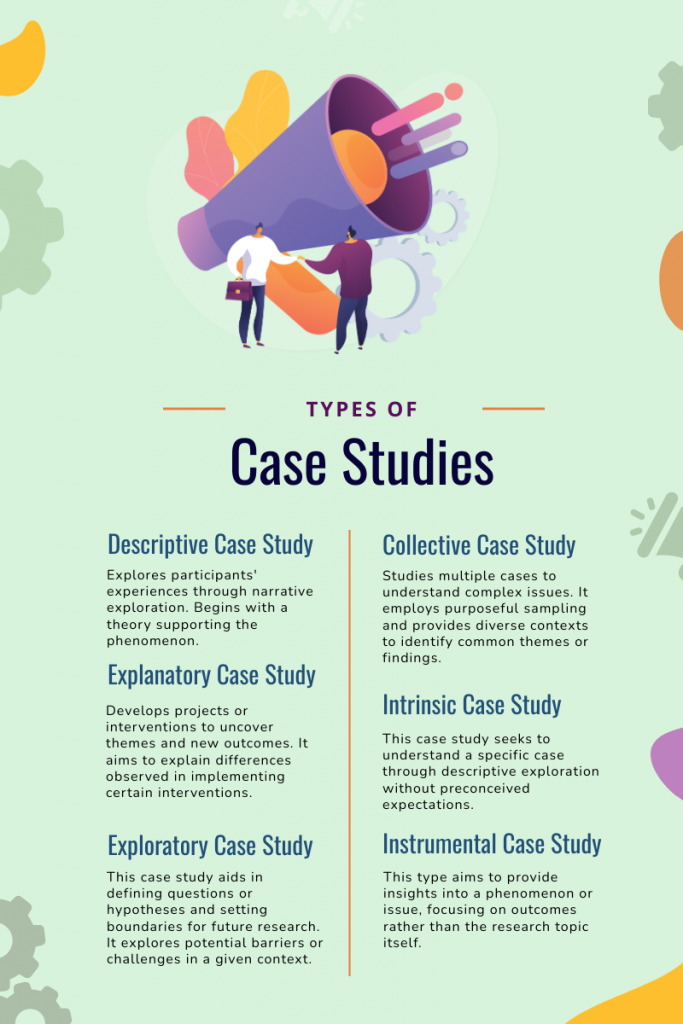
Conclusion
Knowing “What is a case study” should be the first step in creating a case study. Sometimes, marketers get stuck on how to make a case study easily. Try DocHipo case study templates with customizable designs in accounting, consulting, design, technical or IT services, marketing, and software. Sign up for free and save time with suitable pre-designed industry-specific challenges and benefits that align with your business solutions.
FAQs
What are the limitations of a case study?
There are two main disadvantages: limited generalizability and applicability to broader contexts and the potential for researcher bias due to subjective data interpretation.
When should you do a case study?
A case study is ideal when you want to gain in-depth insights into a specific real-life situation or phenomenon. Also, you can use case studies to create a strong authority for your brand presence.
What is the difference between a case study and an essay?
A case study focuses on a specific real-life situation or problem and its solutions, while an essay is more general and can cover a wide range of topics. Also, the format and length of these two content are very different.
What is the difference between a case study and action research?
A case study is an in-depth analysis of a specific instance, while action research focuses on making specific changes to address a problem and involves reflection and inquiry.
How do you describe a case study?
A case study focuses on a real-life situation or problem. It provides a detailed analysis of the issue and discusses the solutions and their outcomes.
What are the most important parts of a case study?
A case study has six important parts: background, executive summary, challenges, solutions, conclusion, and CTA for conversion.

